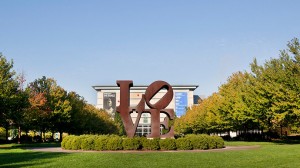 Preamble: I know what I don’t know. Specifically, when looking at any arts organization and its menu of prices, I do not have insider knowledge of its current or potential audience, its donors, or its costs. So when I comment on the price structure of any specific museum or other arts firm, I do so only by asking questions, not by advising what it should or should not change. And with that cleared up …
Preamble: I know what I don’t know. Specifically, when looking at any arts organization and its menu of prices, I do not have insider knowledge of its current or potential audience, its donors, or its costs. So when I comment on the price structure of any specific museum or other arts firm, I do so only by asking questions, not by advising what it should or should not change. And with that cleared up …
Why does the Indianapolis Museum of Art have free admission? In her neighboring blog, Judith Dobrzynski describes the fiscal troubles at the IMA, with layoffs to come. She quotes IMA director Charles Venable as stating there needs to be an increased emphasis on “earned revenue”, and less reliance on endowment. I’ll have to confess that I’ve never understood the free admission policy in the first place. Yes, there are admission fees for special exhibitions, but at the moment all exhibitions are free as well.
Furthermore, Indianapolis residents are accustomed to paying admission fees. The Indiana State Museum is not free, the Eiteljorg Museum is not free, the Children’s Museum is emphatically not free. So it is not as if competition has driven the IMA to free admission.
Also, the IMA is not in a location to which one walks. You drive there. Visitors have enough of an investment in wanting to see the art that they are willing to make a journey of it. Which suggests to me that a moderate admission fee would not deter many visitors, given they are already willing to pay a cost in travel time.
And if the goal is an intended benefit to lower-income people interested in art, I can only direct to my earlier post on whether this is the best means of targeting benefits to such folk.
Again, I don’t know the details of the IMA’s visitors, or other potential sources of revenue. But from the outside at least, the policy is something of a mystery.

According to Wikipedia, the IMA had a history of free admissions until 2006, when a $7 entrance fee was instituted. The entrance fee lasted only about a year. It was dropped when attendance fell off. Reinstituting the free policy doubled the attendance numbers in the ensuing years. Interestingly, the IMA received a National Medal for Museum and Library Service in 2009 and one of the reasons cited was the free admissions policy.
I am an arts educator, and I can say that an admission fee is a serious barrier to getting my students to view art in person. If the goal of the museum is to interest more, and a wider variety of, people in visual art, then an admissions fee is counterproductive. Major museums (cough–Art Institute of Chicago–cough) can get away with it but not the IMA. Frankly it’s not in that league and never will be despite their ambitions.
Since the announced price increase to 18 dollars from “free” by the IMA, I can agree with both the necessity and it’s shortcoming. As a former BSAM grad, I would theorize that a more level cross marketing plan might have helped with the sticker shock seen by the public. Possibly by lowering the price of special exhibits (20 to 10 dollars) and increasing general admission to only 10 dollars. Or including the price of parking in admission, alleviating the need for a parking attendant (if so, or related costs). Of course, special exhibitions like (George O’Keefe) are planned years in advance and require large budgets, and interest the most to attend. The price seems reasonable in comparison to many other museums. But, by not protecting the barrier for art and income, a trend arises (I.e. Disposable income/predominately Elitist consuming/influencing art). Very many factors for the board to consider. I do believe art consumption should come with an admission fee that’s reasonable at defining the value to the customer, without deterring their investment (easier said than done).